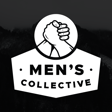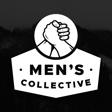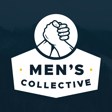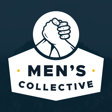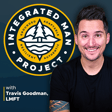
EMDR, Bilateral Stimulation, and Mental Wellness: Introducing Dharma Dr (feat. Brad Mosell)
Welcome to another enlightening episode of The Integrated Man Project! Today, we dive deep into the transformative realm of mental health with our special guest, Brad Mosell.
Brad Mosell is the CEO of Dharma Dr, a groundbreaking company based in Boise, Idaho, dedicated to making bilateral stimulation accessible to anyone, anytime, anywhere. Brad's journey through personal struggle led him to discover the therapeutic potential of EMDR and bilateral stimulation. Fueled by a passion for making healing tools available in nonclinical settings and resource-scarce areas, he developed the innovative "Tabs" device, which integrates Eastern meditation practices with Western psychological techniques.
HIGHLIGHTS:
1. **Integration and Healing:** Brad Mosell shares his insights on the pursuit of integration, as opposed to balance, and how bilateral stimulation through EMDR has been pivotal in both his personal and professional life.
2. **Dharma Dr Tabs:** Travis and Brad delve into the design and functionality of the Dharma Dr device, including its wireless, user-friendly "Tabs" and the connectivity options through its accompanying app.
3. **Accessibility and Impact:** The conversation highlights the importance of making mental health tools more accessible. Brad emphasizes the potential applications of the device for various populations, including students, first responders, and individuals with PTSD, and the effort to reduce the barriers to mental health care.
How can mental health practitioners and innovators like Brad Mosell ensure that tools for bilateral stimulation and EMDR are both accessible and effectively integrated into various nonclinical settings to reach a broader audience, especially in resource-scarce areas?
Join us as we unpack the healing power of bilateral stimulation, the compassionate design of the Dharma Dr Tabs, and the mission to make mental health tools more user-friendly and readily available.
Plus, Brad gives listeners an exclusive discount code for their first purchase on dharmadr.com. Whether you're a mental health professional or someone seeking inner peace, this episode is brimming with insights and practical solutions to help you on your journey. Tune in and transform with us!
Grab Your Tabs with My Affiliate Link:
BUY NOW
JOIN THE MAILING LIST & GET INVOLVED!
WATCH ON YOUTUBE:
Connect and Support Brad:
IG: mydharmadr
Web: dharmadr.com
Connect and Support Travis:
YouTube: Travis Goodman
Instagram: @integratedmanproject
Check out the Website: TBD
